Week #2 of blogging 365 days in a row
| Blogging | 3 seen
<p>On October 3rd, 2013, I started a blog contest for myself - <a href="http://reinisfischer.com/node/8">Can you blog 365 days in a row.</a></p><p>Today is already 2nd week of my blogging expierence.</p><p>In second week, I continued to use "cheat" tactic, by publishing posts in future dates. That works ok.</p><p> </p><p>I found out that posts I write to publish in future dates are more from - <em>How stuff works</em> category - I'm writting a lot about <a href="http://reinisfischer.com/topics/drupal">Drupal</a> configuration.</p><p> </p><p>Posts non-related to technical stuff - I'm publishing ASAP :)</p><p>Week 2 - marks 17 posts in total, by one (16) <a href="http://reinisfischer.com/week-1-blogging-365-days-row">more than in first week</a>.</p><p> </p><p>But - I must agree that I'm <a href="http://reinisfischer.com/node/8">already achieving routine feeling</a>, I talked starting this contest.</p>
Armenia, then, now - future
| Emerging Markets | 9 seen
Recently I wrote an article about Georgia, then, now - future, this time I would like to write about Armenia.
Landlocked land, with huge economic problems, ongoing conflicts with neighboring Azerbaijan over Nagorno-Karbakh region. A country that plans to enter Eurasian Union on January 1st, 2014.
Let's start with some basic chart:
As seen from the chart above, Armenia, as well as neighboring Georgia, is no exception, in economic shrink after collapsing of Soviet Union. Now let's take a closer look by years:
- 1991. - The collapse of Soviet Union - Economy Shrinks
- 1992-1993. The economy continues to shrink, by reaching its bottom in 1993 in resulting GDP nominal just 1.201 bln USD
- 1994-1998. Economy starts to recover, reaching GDP 1.893 bln USD nominal
- 1999-2000. Looks like Armenia is softly touched by Russian economic crisis as well
- 2001 - 2008. "Golden ages" for Armenian economy. Armenia first in 2002 has greater GDP, that it was in 1990. The Year of 2008 is yet the best year for Armenian GDP - reaching 11.662 bln USD
- 2009. As the rest of world Armenia is hit by World economic crisis
- 2010-2011. Slow recovery
- 2012. Recession
- 2013. It's proposed that Armenian GDP will grow by 4.6%
- 2014. It's proposed that Armenian GDP will rise for another 5.2%
I would like to add, that despite many sources claim that Armenia is worst economy in the world - I wouldn't say that, because of being isolated from the side of Azerbaijan and Turkey, only economical ties are left with Georgia. Armenia doesn't have a direct border with Russia. Some may wonder, why Armenia would like to enter Custom Union. But what else is left for Armenia? And by putting all this together, I would say - Armenia is keeping briskly. Imagine Armenia regulates relationships with Azerbaijan and Turkey...
Anyway, let's see what International Monetary Fund prognoses for Armenia in Future
According to the chart above, we can see that Armenia will have ~ 5% GDP growth each year, next 5 years. And just by 2016, Armenia could reach it's pre-crisis level as it was in 2008.
But, I wouldn't be so skeptical about future of Armenia, because I have this feeling that if Armenia will incorporate in Eurasian Union - we will see much greater GDP growth.
Few shots from Samgori, Tbilisi
| Living in Georgia | 22 seen
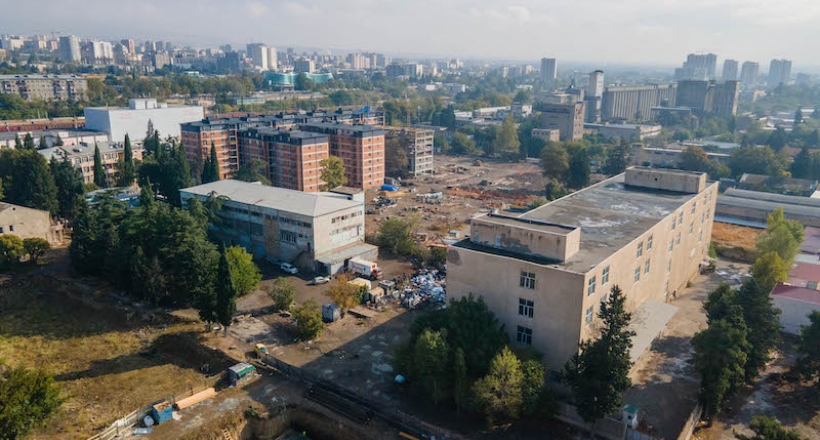
Samgori is a district in Tbilisi, which is connected to the city center by the metro. Seems that the Samgori neighborhood is rarely visited by tourists
I first visited this part of Tbilisi back in August/September 2013. A lot has changed ever since, and now I considering investing in Samgori real estate market, as the property prices stile are among the lowest in the city
A place to grow
How to Add Facebook Like Button to Drupal 7 Site
| Drupal Development | 6 seen

If you want to add the Facebook like button to your Drupal 7 site, the process is relatively straightforward. To get started, you will need to download the Facebook Like Button module from the modules section of your Drupal site. Once you have downloaded the module, extract it to the sites/modules folder.
Next, you will need to enable the Facebook Like Button module from the Modules page.
Once you have enabled the module, go to the admin/config/fblikebutton page to configure the module. You will be presented with two options for the Facebook like button: Dynamic and Static. Depending on your desired behavior for the like button, you will need to choose one of these options.
If you want the like button to dynamically like the page you are visiting, choose the Dynamic option.
To set up the like button for Drupal posts (nodes), you will need to go to the admin/config/fblikebutton/dynamic page. Here, you will be able to configure the appearance and behavior of the like button, including the layout, show faces, font, and color scheme.
By using the Facebook Like Button module, you can easily add a powerful social sharing tool to your Drupal 7 site. This module eliminates the need to manually copy and paste the Facebook like code for each piece of content you create. Instead, the code will automatically be added to the end of each chosen node type, making it quick and easy to get started with social sharing on your site.
The steps to enable a Facebook Like box as a separate block are as follows:
By following these steps, you will be able to add a Facebook Like box to your Drupal 7 site as a separate block, accessible to both authenticated and anonymous users.
Drupal Friendly URL Setup: A Step-by-Step Guide for Optimizing Your Site URLs
| Drupal Development | 31 seen

Update: This article covers details on how to enable and configure the Pathauto module for the Drupal 7 site. For Drupal 8, please see: How To Setup Pretty URLs For Drupal 8
Setting up Drupal-friendly URLs is one of the most essential tasks for Drupal users, as these URLs play a critical role in both human readability and search engine optimization (SEO). In the latest versions of Drupal, some of the friendly URL features are enabled by default, but there may still be instances where you need to configure them further.
The default Drupal URL format is structured like node/21, which is functional but not ideal for human readability or SEO. To convert this URL to something like /my-awesome-title, you will need to download and enable two modules: Pathauto and Token.
Once you have installed both modules, navigate to the URL patterns settings at admin/config/search/path/patterns. From here, you can start customizing your Drupal-friendly URLs to match the desired format.
By properly configuring Drupal-friendly URLs, you can improve the overall user experience on your website and enhance its visibility to search engines.
In most cases, the following Default path patterns will suffice:
- [node:title] for your content pages
- topics/[term:name] for your tags
- users/[user:name] for your users
Additionally, you can enhance your URL structure by incorporating date or node ID with the help of Replacement Patterns.
Once you're satisfied with your path pattern configuration, save it and head to admin/config/search/path/update_bulk. Select the content types you want to update, click update, and let the magic happen. It's that simple!
The Importance of Monitoring Germany's Economy for Forecasting EU's Future
| Macroeconomics | 20 seen

Germany is the largest economy in the European Union, accounting for more than 3 trillion USD GDP nominal.
This gives us a clear indication that if we can forecast the German economy, we can also forecast the economy of the European Union and even the Euro Zone.
Understanding the economic landscape of Germany is crucial, as it is a dominant player in the EU, with a significant impact on the overall economic health of the region.
The chart above showcases the GDP nominal of Germany compared to the European Union in 2012.
As seen in the chart, Germany accounted for more than 20% of the total EU GDP in that year, which is a significant portion. This highlights the importance of understanding the German economy and its future projections, as they can serve as a predictor for the EU as a whole.
According to the DIW, the German economy is expected to expand by 0.4% in 2013 and 1.7% in 2014. This predicts relative stability for both Germany and the EU. However, it is important to note that the German economy is not immune to external factors such as the ongoing global economic uncertainty.
The chart below provides a visual representation of the expected growth of the German economy from 2013-2014. It shows that the German economy is predicted to expand by approximately 71.62 billion USD, which is just a little less than the sum of the economies of the Baltics or Caucasus. This projection highlights the resilience and stability of the German economy, despite the challenging global economic environment.
However, it is important to understand that the German economy is not immune to external factors and external shocks. For example, the ongoing trade tensions between the US and China have created uncertainty in the global economic landscape. Additionally, the Brexit uncertainty has also had a significant impact on the EU economy, with Germany being no exception. The German economy is heavily dependent on exports, and any changes in the global economic landscape can have a significant impact on its growth.
Another important factor to consider is the aging population in Germany, which is a challenge for the German economy in the long term. The aging population means that there will be a smaller workforce and fewer people contributing to the economy. This will impact the country's ability to generate revenue, and could lead to a decrease in economic growth. The government is taking steps to address this challenge, such as encouraging immigration and providing incentives for women to enter the workforce. However, it remains to be seen how effective these measures will be in the long term.
Despite the challenges, the German economy remains one of the strongest in the world. The country is known for its strong manufacturing sector and high-quality products, which have helped it maintain its position as a global economic leader. Additionally, the German government is committed to ensuring stability and growth in the economy, and has implemented various measures to support businesses and encourage investment.
In conclusion, the German economy is a crucial component of the European Union, and its stability and growth can have a significant impact on the overall economy of the region. While there are challenges to overcome, such as the aging population and the ongoing global economic uncertainty, the German economy remains one of the strongest in the world and is expected to continue to grow in the coming years. Understanding the German economy and its future projections is essential for businesses and individuals looking to invest in the EU, as it provides valuable insights into the overall economic health of the region.
The Boycott Debate: Should Georgia Participate in the Sochi 2014 Winter Olympics?
| Living in Georgia | 10 seen

In Georgia, the question of whether or not to boycott the 2014 Winter Olympics in Sochi is a hot topic.
Some are calling for a boycott in response to the Russia-Georgia war of 2008 and Russia's recognition of Abkhazia and South Ossetia as independent states. Others argue that it is important to normalize relationships with Russia.
Recently, Georgian students staged protests in seven cities, calling for Georgia's participation in the Sochi games. The Prime Minister of Georgia, Bidzina Ivanishvili, has also weighed in on the debate, stating that the decision will depend on whether or not the participation would be seen as a humiliation for Georgia.
In my opinion, with only 3-9 athletes expected to participate from Georgia, a boycott would bring more international attention to the country's disputes with Russia. By boycotting, Georgia would have the opportunity to once again bring attention to their disputes on a global stage.
If Georgia does decide to participate, the athletes should aim to win gold medals, to show their strength and dominance. However, with such a small representation, the impact of their participation may be limited.
In conclusion, the boycott debate is a complex issue with valid arguments on both sides. Ultimately, the decision will depend on what is best for the country and its people.
Statistics about passengers served at Georgia's airports (2012)
| Airports | 4 seen

Georgia is a country located in the South Caucasus region of Eurasia, known for its stunning natural beauty and rich cultural heritage.
The country has a well-developed transportation infrastructure, which includes a number of modern airports that serve both domestic and international destinations. These airports play a crucial role in connecting Georgia to the rest of the world, facilitating tourism, trade, and business. With the increasing demand for air travel in the region, Georgia's airports have undergone significant upgrades and expansions in recent years, ensuring a comfortable and seamless experience for passengers.
From the capital city of Tbilisi to the coastal city of Batumi, Georgia's airports offer a range of services and facilities to meet the needs of travelers.
Recently I expressed my joy about Kutaisi Airport. Today I found interesting statistics on the Georgian Civil Aviation Agency's webpage. Statistics about numbers of passengers served in Georgian airports 2010-2012.
Right now - there are 4 airports in Georgia, which we have data for:
Let's start with the total number of passengers served in all Georgian airports from 2010- 2012:
According to data available on GCAA website, Georgian airports in 2012 had ~ 16% passenger growth.
Now lets see, how each airports has performed:
Tbilisi International Airport 2010-2012
Kutaisi International airport 2010-2012
Batumi International Airport 2010-2012
Mestia Airport 2010-2012
As seen from charts above, all airports, except Mestia airport, has increased passenger growth rate during period 2010-2012.
My future forecasts is that Kutaisi airport will became second largest soon, this or next year, by outperforming Batumi airport. Why such confidence? In 6 month period (Jan-Jully, 2013) Kutaisi airport has served already 141 844 passengers, and they are adding more flights to and from Kutaisi in future.
Ukraine's Debt Crisis: A Closer Look at the Possibility of Default (2014)
| Emerging Markets | 10 seen

Ukraine is a country located in Eastern Europe that gained independence from the Soviet Union in 1991. Despite its large land area and rich natural resources, Ukraine's economy has struggled since its independence, and the country has been facing various financial challenges in recent years. One of the biggest challenges Ukraine has faced is the possibility of default.
A default is defined as a situation where a borrower is unable to repay its debt. The possibility of default in Ukraine has been a matter of concern for many years, and has been the subject of numerous articles and discussions.
In 2013, former President of Ukraine, Viktor Yushchenko, warned that Ukraine could default in the same year if the government failed to resume borrowing from the International Monetary Fund. This warning was based on the fact that Ukraine was facing massive debt repayments and had limited access to external funds.
In the same year, the Bloomberg agency stated that Ukraine was the next country after Greece to default in debt repayments due to the poor state of its economy. The analysts cited the International Monetary Fund (IMF) as doubting Ukraine's ability to repay its 12 billion dollar debt. However, not all experts agreed with the conclusion of the analysts, as some saw political undertones in the prediction of a default.
By the end of 2012, Ukraine's foreign currency holdings had declined significantly, going from $31 billion to less than $21.7 billion. This decrease in foreign currency holdings was accompanied by a decrease in the country's level of "import coverage". Import coverage is defined as the number of months' worth of imports that a country can afford with its current level of foreign reserves. A level of less than three months is usually seen as problematic, and Ukraine's level had been declining steadily for two years.
Despite the dire situation, experts remain optimistic that Ukraine can avoid a default. The CEO of Dragon Capital investment company, Tomas Fiala, stated that one should not expect default in Ukraine. According to Fiala, Ukraine has several safeguards that it can use, and the most effective one is to resume cooperation with the IMF. In fact, a new IMF program has been established with the aim of removing the default issue from the agenda.
It is worth mentioning that the current political situation in Ukraine has also impacted its economy. In 2014, Russia stopped its credits and direct investments, which resulted in a serious social and political destabilization in Ukraine. This event contributed to the current financial difficulties faced by the country.
In conclusion, the possibility of a default in Ukraine has been a matter of concern for many years. Despite the various challenges faced by the country, experts remain optimistic that Ukraine can avoid a default if it resumes cooperation with the IMF and takes the necessary measures to stabilize its economy.
How To Create an Upcoming Posts Page in Drupal Using Views
| Drupal Development | 4 seen

In this Drupal Development tutorial, I will walk you through the process of creating an "Upcoming Posts" page in Drupal using the Views module.
Future posts are an essential aspect of maintaining a well-organized blog, and this tutorial aims to provide an easy solution for filtering future posts in the Drupal admin panel.
By default, Drupal does not come equipped with the "Upcoming Posts" feature, making it challenging to filter future posts in the content admin panel. However, with the help of the Views module, it is possible to achieve this.
Here is a step-by-step guide on how to display future posts using Drupal Views:
With this guide, you can now easily create an "Upcoming Posts" page in Drupal. I hope this article has been helpful and I look forward to your comments.
Georgia's Parliament: Moving Back to Tbilisi?
| Living in Georgia | 7 seen
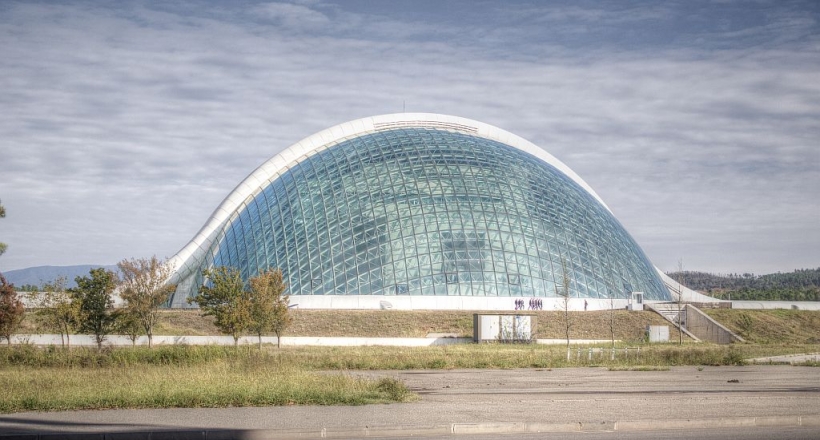
In 2012, the Parliament of Georgia was relocated from Tbilisi to Kutaisi by then-president Mikheil Saakashvili.
The move was meant to give a boost to the city of Kutaisi. However, after the Parliament elections in 2012, which were won by the Georgian Dream coalition, plans were made to move the Parliament back to Tbilisi due to communication issues with other government institutions and high travel expenses.
As an impartial observer, I have always seen the potential benefits of moving the Parliament to Kutaisi. The city has also gained a new Parliament building and an international airport, which seemed like positive developments.
The Georgian Parliament building now is located in Tbilisi, the capital city of Georgia. It was previously located in Kutaisi, but was relocated back to Tbilisi after the 2012 Parliament elections.
Exploring the Economic Journey of Georgia: Historical GDP and Future Forecasts (2012)
| Macroeconomics | 21 seen

Georgia is a country located in the South Caucasus region and has a rich and diverse history. The Georgian economy has gone through its ups and downs in the past few decades, and in this article, we will take a closer look at its historical GDP and project what the future might look like.
To start, let's examine the historical GDP of Georgia by nominal values.
The chart shows that Georgia, like many other former Soviet republics, experienced a decline in its economy in the 1990s. This decline can be attributed to several factors such as the collapse of the Soviet Union in 1991, the war in Abkhazia in 1992-1993, and the Russian economic crisis in 1999.
However, the Georgian economy began to recover in the mid-2000s with the start of the Rose Revolution and the increase in international aid after the 2008 war. The Georgian economy continued to grow at a steady pace from 2010 to 2012.
Next, let's take a look at the historical GDP per capita of Georgia.
The chart shows that Georgia's GDP per capita has gradually increased over the years, reaching its highest point in 2018.
According to the International Monetary Fund (IMF), the Georgian GDP is expected to grow by an average of 6% per year until 2018, reaching a total of approximately 21.81 billion USD. While this growth is possible, it is important to consider factors such as population size and global economic conditions that could potentially impact the future of the Georgian economy.
In conclusion, the future of the Georgian economy looks promising with a projected growth of 6% per year. However, it is important to keep in mind that there are many factors that could potentially impact the country's economic growth.
2013 Georgian Presidential Election: Understanding the Candidates
| Living in Georgia | 6 seen
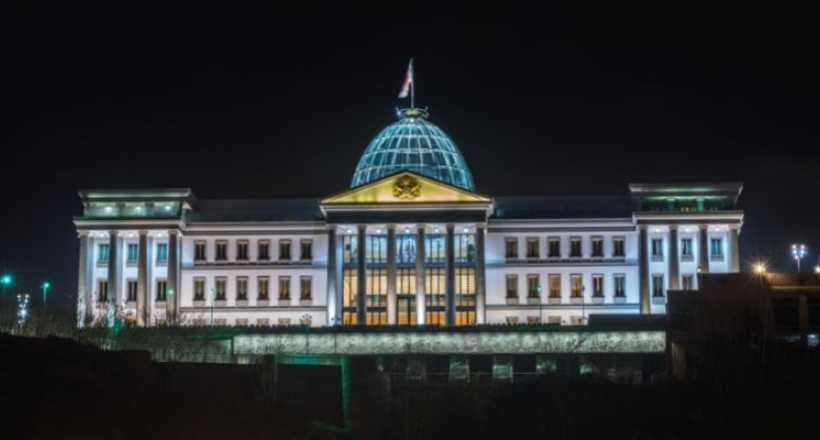
Georgia's presidential elections are set to take place on October 27th, 2013, and three main candidates have emerged as frontrunners. Giorgi Margvelashvili, David Bakradze, and Nino Burjanadze, each with their own political backgrounds and experiences, are the main contenders for the presidency.
As a foreigner living in Georgia, it can be difficult to keep up with the intricacies of Georgian politics, but it's important to have a basic understanding of the candidates and the role of the president in Georgian politics.
Giorgi Margvelashvili, the first candidate, is a philosopher by education and a former rector of the Georgian Institute of Public Affairs. He was named as the presidential candidate for the Georgian Dream coalition on May 11, 2013. Margvelashvili is not a member of any political party and has a background in education and philosophy.
David Bakradze, the second candidate, is a Georgian politician and diplomat who served as the Chairman of the Parliament of Georgia from 2008 to 2012. Bakradze has held a number of positions in the past, including Minister for Conflict Issues, Minister of Foreign Affairs, and the President of Georgia's special envoy to NATO and the European Union. Bakradze is a member of the United National Movement, the party of current President Mikheil Saakashvili.
The third and final candidate, Nino Burjanadze, is a Georgian politician and lawyer who served as Chairperson of the Parliament of Georgia from 2001 to 2008. She has twice served as the acting head of state of Georgia and withdrew into opposition to Saakashvili as the leader of the Democratic Movement-United Georgia party in 2008. In June 2013, she announced her intention to run for president in the October 2013 election.
It can be difficult for foreigners in Georgia to keep up with the intricacies of Georgian politics, especially since the role of the president in Georgia has become somewhat symbolic since the last parliamentary elections. However, despite the symbolic nature of the presidency, it is still an important office in the country, and the outcome of the election could have a significant impact on the political landscape of Georgia.
Based on the information available, it is difficult to predict who will win the presidential elections in Georgia, but it is possible that the winner could be Giorgi Margvelashvili, due to his affiliation with the ruling Georgian Dream party. However, it is also possible that Nino Burjanadze, who has been more prominent in Georgian politics, could win the election.
It is important for foreigners living in Georgia to stay informed about the political climate in the country, as it can have a direct impact on their daily lives. Whether or not one should pay more attention to Georgian politics depends on the individual's own interests and needs, but it is advisable to have a basic understanding of the political landscape in the country.
Drupal 7: How to Show a Custom Image When No Image is Provided
| Drupal Development | 17 seen

In Drupal 7, managing images can be quite challenging, especially when the default image is not provided. The platform provides an option to display a default image under "manage fields," but this approach can be limiting as the same default image will be displayed wherever the image field is used.
To overcome this limitation, you can follow these steps:
With these steps, you can have complete control over the image display, and the custom default image will only be shown when no images have been added to the image field.
{% if image_field is empty %} <img src="path/to/your/default/image.jpg" alt="Default Image"> {% else %} {{ image_field }} {% endif %}
This code will check if the image field is empty and if it is, it will display the custom default image you specified. If there is an image present, it will display that instead.
In Drupal 8, the process is similar, but with some differences. You can follow these steps to display a custom default image in Drupal 8:
With these steps, you can have complete control over the display of default images in your Drupal website.
In conclusion, there are several ways to display a custom default image in Drupal, whether it be through the Views module, or through the use of conditional statements in your theme’s template file. With a custom default image, you can ensure that your website always looks polished and professional, even if an image is not provided.
Autumn in Borjomi
| Living in Georgia | 26 seen
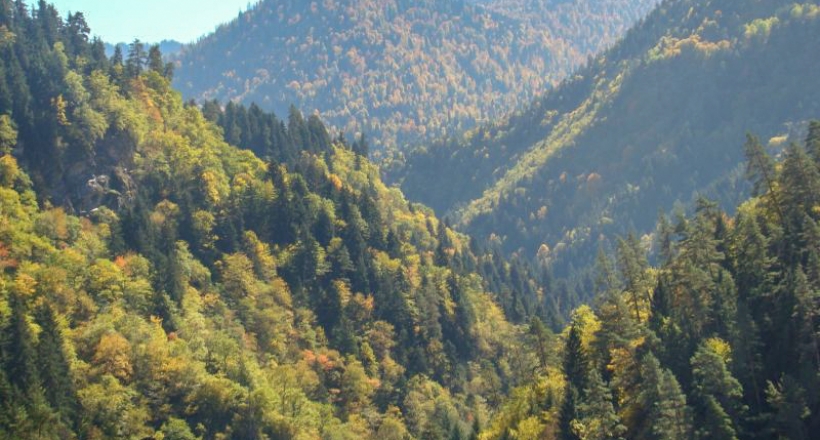
Borjomi altogether with Samtskhe - Javakheti region are among my Top destinations in Republic of Georgia. I have spent here countless days and nights. One of the best times to head here definitely is Summer, when temperature in nations capital Tbilisi rises above +40 Celsius, a lazy rest on the rocks in Borjomula river is like a safe haven. See Borjomi trip.
You can explore Borjomi either doing rafting on Mtkvari river (See: Rafting in Georgia - Khertvisi - Aspindza - Borjomi) or just by heading here by local transport called - marshrutka. See Tbilisi - Borjomi Transfer by Marshrutka (Minibus).
Borjomi is a paradise for hikers, there are many cool hiking routes available in Borjomi National park.
Borjomi is great for photography as well and Fall is one of the best times to head here for photography, in this article I have submitted some historical photos from my travels to Borjomi from Autumn 2013 (October 11).
Reconstruction works in Borjomi
Bridge in Borjomi
Construction works in Borjomi
Borjomi Mineral Water Park
Borjomi mineral park is located in town on Borjomi, some 120 km from nations capital Tbilisi, is a lovely place to enjoy a lazy day, preferable for slow walking and enjoying beautiful aroma coming from pine cons.You can read my review about this park here: Borjomi Mineral Water Park in Georgia
Legendary Borjomi cable car
One of the most interesting attractions in Georgian resort town of Borjomi is a cable car leaving from Mineral Water Park and heading uphill offering lovely and scenery views of Mineral Water park. Sometimes it's just enough to take that ride here to enjoy those scenery and beautiful views of Borjomi. See details here: Borjomi Cable Car (Aerial Tram)
Ferris wheel in Borjomi
Borjomi spring
Visitors can take a free Borjomi mineral water at this spring
Spectacular views to the mountains
View towards Borjomi
Latest video

Tsikhisdziri & Batumi Botanical Garden
After returning from our amazing trip to Thessaloniki, we decided to extend our holiday a bit longer — this time in beautiful Tsikhisdziri. Huge thanks to Eto for kindly offering her cozy apartments at Bambo Beach, where we enjoyed a full week of relaxation by the sea.During our stay, we explored local gems like Shukura Tsikhisdziri (შუქურა…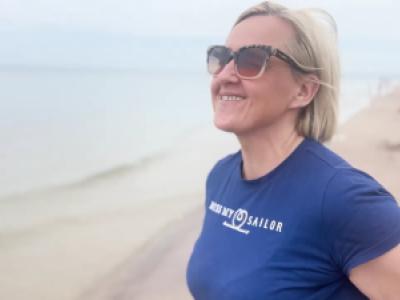
Summer in Latvia 2025
Summer in Latvia movie is out - Join us on our July (2025) journey through Latvia: installing a bathtub in our countryside cottage, setting up a pop-up store at Bangotnes, celebrating a birthday in Vērbeļnieki, traveling via Riga to Jaunpiebalga, Vecpiebalga, Smiltene, and Valka. From sipping sparkling wine with swallows to running 4K morning…
Chateau Ateni. Gori
This time (May 2025), our journey takes us to Gori and the enchanting Chateau Ateni - a hidden gem where authentic Georgian cuisine blends seamlessly with avant-garde natural wines, soulful traditional dance, and even the charming surprise of a small chick farm.What makes this trip extra special is sharing it with our Latvian/Georgian friends,…Living in Georgia

12 Rounds Boxing Club in Tbilisi
Sometimes even the most loyal gym-goers need to shake things up—and that's exactly what I did this month. After years of training at the "luxurious Axis Tower gym", I decided to take a short break. Not because I had any complaints about…
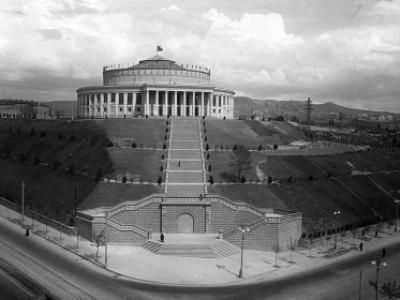
Tbilisi Circus: A Historic Landmark with a Surprising Past
Tbilisi Circus is an iconic part of the city's cultural landscape. Having lived in Georgia since 2011, I have passed by the Tbilisi Circus almost every day. However, it wasn’t until I attended a show that I truly appreciated its grandeur…
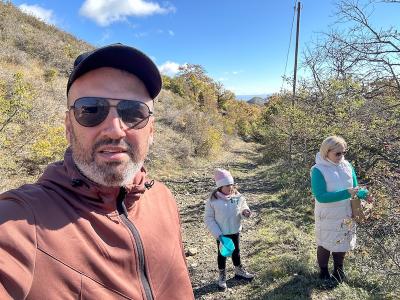
Foraging for Mushrooms near Tsodoreti Lake: A Day in the Suburbs of Tbilisi
Back in June 2024, I first came across Tsodoreti Lake during one of the Tbilisi Trails races, which turned out to be one of the most challenging runs of my life. While I tackled the 10K trail route, my partner and our kiddo took a gentler…
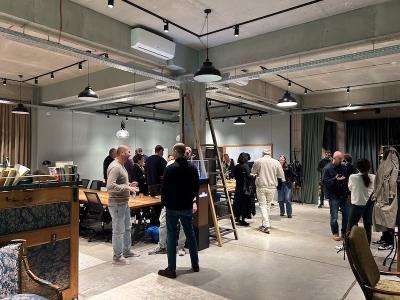
Axel Georgian Business Angel Networking Event: Exploring Opportunities in Tbilisi
In mid-October 2024, I had the pleasure of attending the Axel Georgian Business Angel networking event, held right here in Tbilisi. Having passively observed the Georgian tech scene for over a decade, this event provided the perfect…
Frame House

Frame House Upgrades: Big Windows, New Porch, and Apple Trees Planted in Latvia
In mid-April, during our kiddo’s Easter school break, we traveled to Latvia for about 10 days — a trip packed with projects, energy, and transformation. A lot of pre-planning had gone into it before we even arrived: we ordered the windows…
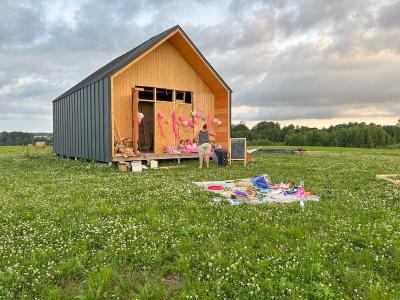
Frame House in Latvia: Outdoor Patio, Inner Walls, and More
As June came to an end, our family embarked on a journey from Tbilisi to Latvia, skipping Renee's school year for the last week and focus on our frame house project. Here's a glimpse into our busy but rewarding time working on the house.We…
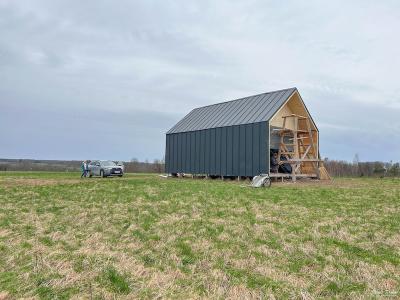
Spring Break Project: Building Progress on Our Frame House in Latvia
As the chill of winter slowly gives way to the warmth of spring, it's the perfect time to roll up our sleeves and dive back into the construction of our dream frame house in Latvia. During this Spring break from British International…
Piece of Life

Postcards from Marseille
It’s been nearly two years since our last trip to Marseille, a sun-drenched jewel on France’s southern coast that left an indelible mark on our memories. That summer of 2023, we set out to explore the city’s vibrant beaches and winding old town, arriving and departing through the bustling hub of Marseille St. Charles train station. As I sit…
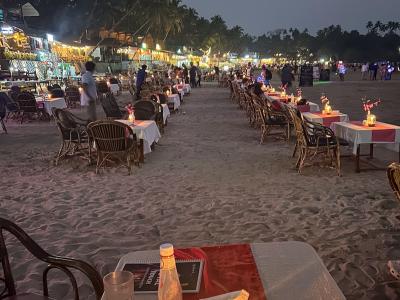
Christmas Eve at Palolem Beach: Fire Shows, Old Monk
While we just celebrated Orthodox Christmas in Georgia, I can’t help but delve into the memories of our Western Christmas last year (2024), spent on the serene shores of Palolem Beach in Goa, India. That evening was magical in every way, filled with vibrant energy, beautiful scenery, and a new discovery that made the night unforgettable.Palolem…

A Family Guide to Borjomi: Hiking Trails and Sulfur Bath Tips
As summer came to a close, we continued our family's tradition of visiting Borjomi. This year marked yet another memorable trip at the end of August 2024, reaffirming our love for this beautiful Georgian town. Visiting Borjomi at least twice a year has become a cherished routine, a piece of life that we look forward to, blending relaxation,…
Travel guides

Summer in Latvia 2025
Summer in Latvia movie is out - Join us on our July (2025) journey through Latvia: installing a bathtub in our countryside cottage, setting up a pop-up store at Bangotnes, celebrating a birthday in Vērbeļnieki, traveling via Riga to…

Birthday in Thessaloniki, Greece
Turning 40 is a milestone worth celebrating in style, and what better way than in Thessaloniki — a city that seamlessly blends history, culture, and cuisine. From affordable flights and boutique stays to seafood feasts and hidden beaches,…
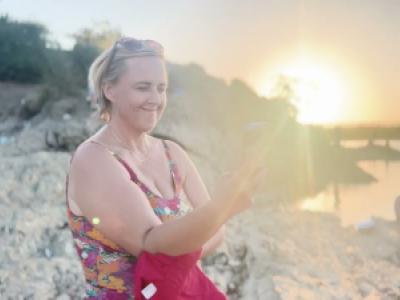
Azeula Fortress, Tbilisi Sea, and Ateni Sioni
August ended with yet another packed and memorable weekend in Georgia. This time, our journey took us from the hills near Kojori to the refreshing waters of the Tbilisi Sea, and finally to the historical town of Gori, where we enjoyed a…
Hotel Reviews
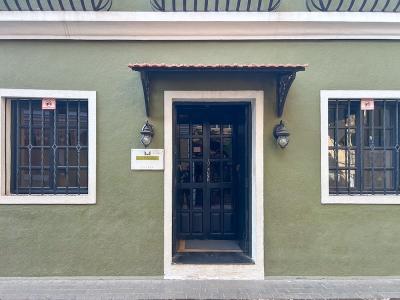
Stays & Trails La Maison Hotel Review in Panaji
At the tail end of 2024, just before catching our flight back to Delhi, we decided to book a one-night stay at Stays & Trails La Maison Fontainhas in Panaji, Goa. After weeks staying in Palolem beach, we wanted to wrap up our trip with…
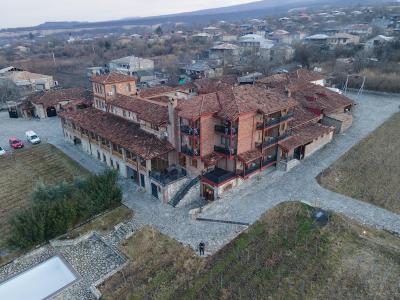
Schuchmann Wines Château: A Long-Awaited Stay in Georgia’s Premier Winery Hotel & Spa
It took us over a decade to finally make it to Schuchmann Wines Château & Spa, and it was well worth the wait! We’ve spent years recommending this stunning winery hotel to visiting friends and business partners, yet somehow, we had…
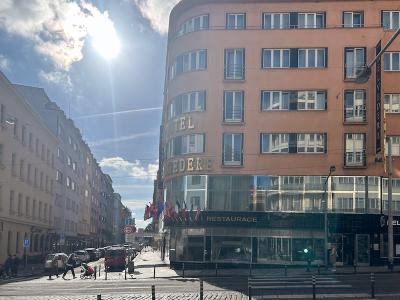
Hotel Belvedere Prague: A Practical Stay with Easy Access
During our recent trip to Prague in mid-October 2024, we stayed at Hotel Belvedere. My partner attended the MEET Central Europe Translators conference, and we were joined by one of our office employees, so we opted to book two rooms. …
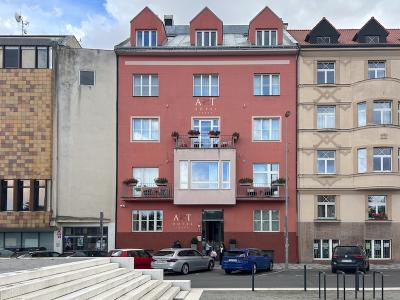
Review: Art Hotel Prague – A Cozy Stay in a Tranquil Part of Prague
During our recent trip to Prague in October 2024, we opted for a one-night stay at the Art Hotel Prague. We arrived at the hotel via Bolt taxi from Václav Havel Airport, which was straightforward and efficient. At about EUR 120 per room…
Toursim objects
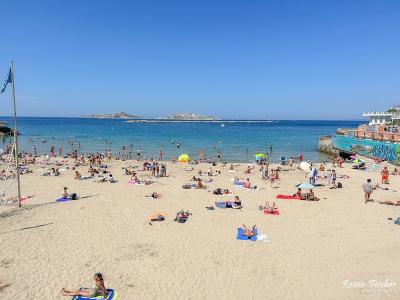
Plage des Catalans: A Shrinking Memory in Marseille
Plage des Catalans, a sandy crescent tucked along Marseille’s coastline, holds a special place in my travel tapestry. I first visited this beach in the summer of 2003, a carefree stop during my early adventures in the city. Back then, it felt like a haven—close to the bustling port yet offering a slice of Mediterranean calm. When I returned…

Colva Beach: Golden Sands and Tranquility in Goa
Colva Beach, located in South Goa, is known for its expansive golden sands and tranquil atmosphere. Stretching for several kilometers along the Arabian Sea, the beach offers a peaceful escape from the busier tourist hubs in the region. Its wide shoreline, framed by swaying palm trees, provides plenty of space for visitors to relax, stroll, or…

Charles Bridge: A Timeless Landmark in Prague
The Charles Bridge (Karlův most) in Prague is one of the most iconic and historic landmarks in Europe. Built in the 14th century under the reign of King Charles IV, this Gothic stone bridge spans the Vltava River, connecting Prague's Old Town with the Lesser Town (Malá Strana). Adorned with a series of 30 Baroque statues and surrounded by…
Macroeconomics
| GDP Growth in the Baltic States (2016–2025) | |
| Minimum Wages in European Union 2024 | |
| Minimum Wages Set to Increase in Baltic States in 2024 | |
| GDP Per Capita in OECD countries 2022 |
Servers and Drupal
Genealogy
| Baltic German DNA Uncovered: Tracing My Ancestry to the von Anrep Nobility | |
| MyHeritage DNA test result | |
| MyHeritage DNA test, flight to Tbilisi, Stock Recovery |